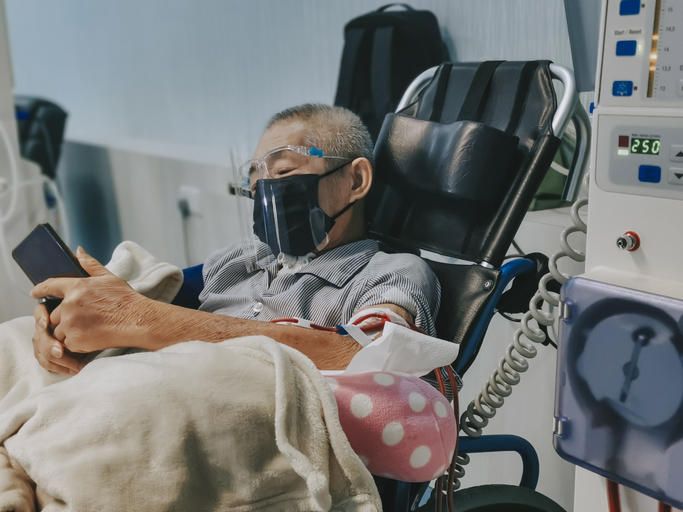
As our population ages and the number of individuals with complex medical conditions increases, so does the number of people who suffer with kidney function failure: end stage kidney disease (ESRD). In 2022, more than 500,000 individuals in the United States will require dialysis therapy to survive. Of those 500,000, an ever-increasing number with advanced age, frailty and multiple comorbid conditions may need ever more complex skilled nursing facility (SNF) care.
In fact, as many as 15 percent of the dialysis population will reside in an SNF at some point during a given calendar year, some of whom will become long-term residents, and others who will be shorter-term, post-acute hospital care residents. Given the specialized needs of this growing population, patient-centric care more than ever before will be a critical component of the rapidly evolving care model for the nursing home dialysis population.

With the Rise of AI, What IP Disputes in Healthcare Are Likely to Emerge?
Munck Wilson Mandala Partner Greg Howison shared his perspective on some of the legal ramifications around AI, IP, connected devices and the data they generate, in response to emailed questions.
Historically, dialysis patients residing in a nursing home have been transported to and from a community dialysis facility for dialysis therapy. In 2021, realizing the benefit of on-site hemodialysis in nursing homes, CMS released updated guidance to the State Operations Manual to provide dialysis services to SNF residents in the “home” setting. These guidelines provided detailed information regarding delineation of responsibilities between the dialysis program and the SNF, the collaborative development of policies and procedures, the coordination of care between the dialysis program and the SNF, and many other topics of importance.
In this context, dialysis services performed on-site in nursing home are poised to enter a growth phase. And while there is unquestionable benefit to eliminating the cost and risk of transporting patients off-site for dialysis services, until very recently, the fundamental choice of technology to meet the special needs of the nursing home population has gone unaddressed.
The critical, pragmatic steps involved in developing patient-centric and equitable care for the nursing home patients came only very recently when medically advanced home hemodialysis therapies were repurposed and modified for use in the elderly, frail nursing home dialysis patient populations with multiple complex comorbid medical challenges.
Home hemodialysis therapies typically involve the use of a different type of hemodialysis technology, utilizing a more frequent, more effective, but gentler, form of therapy that increases survival, reduces hospitalizations, and greatly enhances quality of life. The private home population historically has been far younger and in more robust health compared to the nursing home population. Private home dialysis has historically been self-administered, generally with the help of a family member caregiver.
Modifications in certain technical aspects of the home dialysis machinery and the utilization of trained dialysis professional staff as caregivers has produced a paradigm shift in customizing care when compared to the conventional approach to dialysis care. The use of a congregate treatment setting, a “den” with up to 6 patients simultaneously treated, makes the shared use of professional staff practical and contributes to the financial feasibility of the model.
Moreover, the new model directly addresses the issue of health care equity. Private home hemodialysis is underrepresented with respect to the elderly, the frail individuals of color and lower socioeconomic status. No such disparity exists with the new model of care. Each and every patient is now offered the chance of a longer, higher quality life with more effective, gentler treatments.
When appropriately modified for the elder population, unlike the 8-21 hour recovery times from conventional therapy, more than 90 percent of the nursing home dialysis population recovers from a dialysis treatment within two hours, resulting in a profound improvement in functionality and quality of life. During the next 5 years, this new model will become the standard of care for the nursing home patient population. It’s the least we can do for our elders.
Photo: Edwin Tan, Getty Images
Allen Kaufman, MD, Chief Medical Officer and Senior VP for Clinical & Scientific Affairs at Dialyze Direct since its inception in 2015, has practiced Nephrology since 1980. Residing in New York City, he served as the Chief of Dialysis at the Bronx Veterans Administration Medical Center from 1982-1990, the Chief of Beth Israel Medical Center’s Yorkville Dialysis Unit from 1990-2000 and, subsequently, the Chief of Beth Israel’s Division of Nephrology & Hypertension from 1998-2004.
Dr. Kaufman has published more than 100 manuscripts, articles, book chapters and abstracts and has lectured widely, both regionally and nationally. Throughout his career, Dr. Kaufman has focused on dialysis innovations and therapies, has served on dialysis-related advisory and editorial boards and has received numerous awards, including local, regional and national “best doctor” citations and “patients’ choice” awards.














